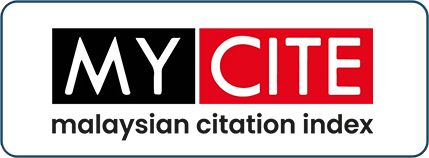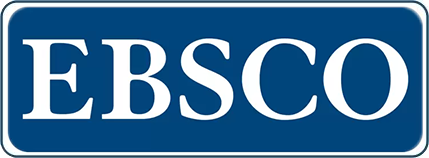Motivational Factors Underlying the Intention Of Herbal Soap Entrepreneurs To Obtain Halal Certificate In Malaysia
DOI:
https://doi.org/10.33102/jfatwa.vol27no1.429Keywords:
Herbal soap, Halal certificate, Coercive isomorphism, Normative isomorphism, Mimetic isomorphismAbstract
The goal of this study is to determine the motivation factors underlying Herbal soap entrepreneurs‘ intention to obtain Halal certificate in Malaysia. This is a quantitative study that employs questionnaires as a research tool and uses Dimaggio and Powell's (1983) model on institutional theory to study the intention of Herbal soap entrepreneur in getting Halal certificate. The study predicted that there are positive links between Malaysian Herbal soap entrepreneurs’ motivation factors (coercive isomorphism, normative isomorphism and mimetic isomorphism) and the intention to obtain a Halal certificate. This study will have significant implications for various Halal stakeholders. Furthermore, despite the fact that many studies have focused primarily on the Halal food sector, there is a need for more research into the Halal Herbal soap market. More empirical and non-empirical research is needed to reveal more concerns with Halal certification in the Herbal soap industry.
Downloads
References
Ab Talib, M. S., Abdul Hamid, A. B., & Ai Chin, T. (2015). Motivations and limitations in implementing halal food certification: A Pareto analysis. British Food Journal, 117(11), 2664-2705.
Ajzen, I. (1991). The theory of planned behavior. Organizational Behavior and Human Decision Processes, 50(2), 179-211.
Azmi, F. R., Musa, H., Sihombing, H., & Fen, F. S. (2018). Adoption factors of halal standards: The Malaysian perspectives. Proceedings of the 3rd International Halal Conference (INHAC 2016), 315-329.
Basir, N. S. A., Chik, C. T., Bachok. S., Baba, N., Hamid, R., & Salleh, M. M. (2018). Motivational factors for halal certification adoption among small and micro enterprises in Malaysia. International Journal of Supply Chain Management, 7(4), 391-396.
Department of Islamic Development of Malaysia (2014). Manual Procedure for Malaysia Halal Certification, Third Revision. Available at http://www.halal.gov.my/v4/images/pdf/MPPHM2014BI.pdf
Department of Islamic Development of Malaysia (2020). Manual Prosedur Pensijilan Halal Malaysia (Domestik) 2020. Available at https://smarthalal.com.my/manual.php
DiMaggio, P. J., & Powell, W. W. (1983). The Iron Cage Revisited: Institutional Isomorphism and Collective Rationality in Organizational Fields. American Sociological Review, 48(2), 147.
Elasrag, H. (2016). Halal industry: Key challenges and opportunities. Hussein Elasrag.
Fischer, J. (2016). Halal Activism: Networking between Islam, the State and Market. Asian Journal of Social Science, 44(1/2), 104-131. Available at http://www.jstor.org/stable/43953984
Grand View Research, Inc. (2020). Essential oils market size, share, analysis report, 2020-2027. Market Research Reports & Consulting | Grand View Research, Inc. Available at https://www.grandviewresearch.com/industry-analysis/essential-oils-market
Hashim, P., & Mat Hashim, D. (2013). A Review of Cosmetic and Personal Care Products: Halal Perspectives and Detection of Ingredient. Science & Technology, 21 (2), 281 - 292.
Herath, D., & Henson, S. (2006). Does Canada need mandatory HACCP? Evidence from the Ontario food processing sector. Canadian Journal of Agricultural Economics/Revue canadienne d'agroeconomie, 54(4), 443-459.
Herath, D., & Henson, S. (2010). Barriers to HACCP implementation: Evidence from the food processing sector in Ontario, Canada. Agribusiness, 26(2), 265-279.
Industry Research Biz. (2021). Herbal soap market size estimation with increasing demand 2021 | Industry analysis by business share, revenue, value & volume, price, gross margin, future and developing trends, investment opportunities, and forecast 2026.
Lewis, J. L., & Sheppard, S. R. (2006). Culture and communication: Can landscape visualization improve forest management consultation with Indigenous communities? Landscape and Urban Planning, 77(3), 291-313.
MarketWatch. (2021, June 24). Herbal soap market size estimation with increasing demand 2021 | Industry analysis by business share, revenue, value & volume, price, gross margin, future and developing trends, investment opportunities, and forecast 2026. Available at https://www.marketwatch.com/press-release/herbal-soap-market-size-estimation-with-increasing-demand-2021-industry-analysis-by-business-share-revenue-value-volume-price-gross-margin-future-and-developing-trends-investment-opportunities-and-forecast-2026-2021-06-24
Meyer, J. W., & Rowan, B. (1977). Institutionalized Organizations: Formal Structure as Myth and Ceremony. American Journal of Sociology, 83(2), 340–363.
Moneycompass. (2020, July 6). Young agropreneurs urged to seize opportunities in Malaysia’s essential oil industry. Money Compass. Available at https://moneycompass.com.my/2020/07/06/young-agropreneurs-urged-to-seize-opportunities-in-malaysias-essential-oil-industry/
Mordor Intelligence. (2021). Organic Skin Care Products Market - Growth, Trends, COVID-19 Impact, and Forecasts (2021 - 2026). Available at https://www.mordorintelligence.com/industry-reports/organic-soap-market
Sabidin.F.(2015). Halal Hotels in Malaysia: Certification, Issues and Challenges. Journal of Tourism and Hospitality Essentials (THE) Journal, Vol. No.2.2015-897. Available at http://ejournal.upi.edu/index.php/thejournal/article/viewFile/2000/1382
Soares-Aguiar, A. Ó., & Palma-dos-Reis, A. Ó. (2008). Why Do Firms Adopt E-Procurement Systems? Using Logistic Regression to Empirically Test a Conceptual Model. IEEE Transactions on Engineering Management, 55(1), 120–133.
Soltanian, M., Zailani, S., Iranmanesh, M., & Aziz, A. A. (2016). Motivations of SME entrepreneurs to become halalpreneurs. Journal of Science and Technology Policy Management, 7(2), 173–189.
Sugibayashi, K., Yusuf, E., Todo, H., Dahlizar, S., Sakdiset, P., Arce, F. J., & See, G. L. (2019). Halal cosmetics: A review on ingredients, production, and testing methods. Cosmetics, 6(3), 37.
Talib, M. S., Bakar, A. H., & Too, A. C. (2019). Conceptualizing the implementation of halal food certification: An institutional theory perspective. Contemporary Management and Science Issues in the Halal Industry, 385-393.
Tarmizi, H. A., Kamarulzaman, N. H., Latiff, I. A., & Rahman, A. A. (2014). Factors Influencing Readiness towards Halal Logistics among Food-based Logistics Players in Malaysia. UMK Procedia, 1, 42–49.
Transparency Market Research. (2021). Halal cosmetics market size, share, growth, trends, forecast 2025. Market Research Reports, Industry Research Firm, Consulting Services . Available at https://www.transparencymarketresearch.com/halal-cosmetics-market.html
Trent, N. Halal Cosmetics Market 2018-Industry Analysis, Share, Growth, Sales, Trends, Supply, Forecast to 2025. Reuters. Available at https://www.reuters.com/brandfeatures/venture-capital/article?id=52417
Williams, Z., Lueg, J. E., Taylor, R. D., & Cook, R. L. (2009). Why all the changes? International Journal of Physical Distribution & Logistics Management, 39(7), 595–618.
Ye, F., Zhao, X., Prahinski, C., & Li, Y. (2013). The impact of institutional pressures, top managers’ posture and reverse logistics on performance—Evidence from China. International Journal of Production Economics, 143(1), 132–143.
Yusuf, E.& Yajid, M.S.A. Related topic: Halal Cosmetics. In Skin Permeation and Disposition of Therapeutic and Cosmeceutical Compounds; Sugibayashi, K., Ed.; Springer: Tokyo, Japan, 2017; pp. 101–107.
Zurinna, R.A., 2012. Malaysian SMEs Urged To Get Halal Certification, Business Times, News Straits Times, Kuala Lumpur, 22 February 2012. Available at http://www.btimes.com.my/Current_News/BTIMES/articles/haloki.pdf
Downloads
Published
Issue
Section
License
Copyright (c) 2022 Salme Yahya, Mazita Mokhtar

This work is licensed under a Creative Commons Attribution 4.0 International License.
The copyright of this article will be vested to author(s) and granted the journal right of first publication with the work simultaneously licensed under the Creative Commons Attribution 4.0 International (CC BY 4.0) license, unless otherwise stated.















